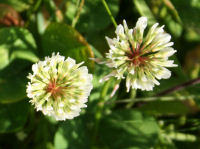
Types of plant and animal fibre. The use of natural fibre. History of fibre in the croplands.
Many plants have stems and roots which are strong enough and pliable enough to be bent and twisted into various shapes without breaking too easily and without having to be altered or processed. Of this type are roofing thatch made from whole stems and leaves, baskets made from plaited stems and leaf blades, and twine and rope made from stems. Hunters and wild harvesters in the neolithic, much earlier than 5000 years ago, used such materials every day. The cloak worn by the man in the ice when he died is made of plaited grass.
Even today, unprocessed plant material is used throughout the world to make thatch, shelters, baskets, clothing, rope and twine.
Once settled agriculture began to feed people, its next most important task was to clothe and protect them and their property. Unprocessed leaf and stem had their limitations, so people discovered plants containing fibres that could be extracted and made into objects that looked nothing like the original plant parts. These processed fibres give rise to materials of two broad types: those made by joining the fibres together into yarn which is woven to make textiles, notably from cotton, jute, hemp, flax, manila and nettle; and those made more simply by pulping the fibres and compressing them into felt, an advanced form of which is rayon made from certain types of wood, but which can be made from many types of fibre.
In addition to fibres from plants there are fibres spun from the hair of animals: sheep, camelids such as the alpaca and lama and oxen such as the yak. The silkworm, the larva of a moth, nurtured on leaves of the mulberry (Morus species), encloses itself in a cocoon from which the silk is spun.
Fibres have a long history in the agriculture of the north east atlantic region. Sheep’s wool is the best known. The plant fibres from flax and hemp have both featured in agriculture at various times over the last few thousand years. The one most important in recent industry has been jute, but its influence has been through manufacturing, not cultivation. In this part of 5000 years, we deal mainly with plant fibres growing wild or cultivated, or imported.



